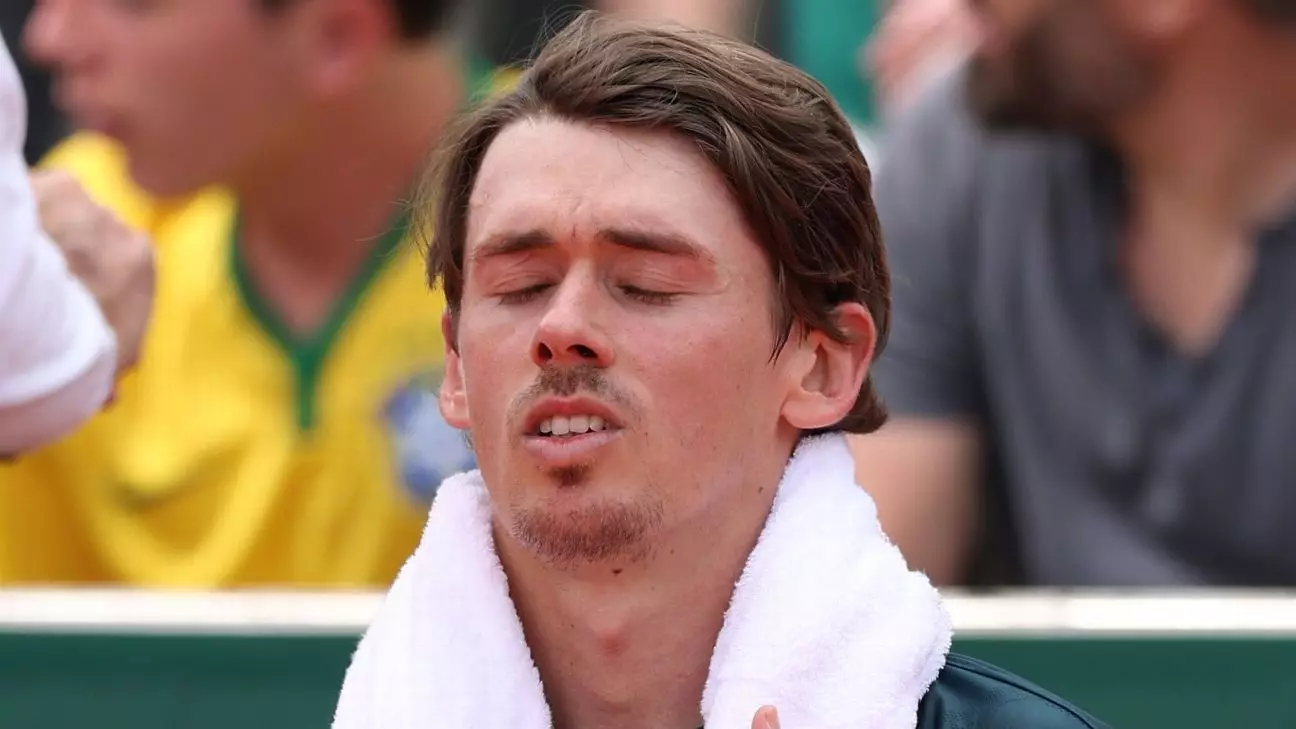In a world where high-performance sports continually push the envelope, tennis finds itself at a critical juncture. Recent statements from players like Alex De Minaur and Casper Ruud highlight a growing concern within the professional circuit: the relentless nature of the tennis calendar is not just exhausting—it’s unsustainable. De Minaur’s exit from the French Open, coupled with his impassioned plea for a revised schedule, underscores the mental and physical toll that the current system exacts on athletes. As the calendar flows chaotically from one tournament to the next, players grapple not just with their physical limits, but also with the perils of burnout—an issue that is all too often swept under the rug.
Indeed, the current structure of the season is bordering on absurdity. The season begins in December, shortly after the conclusion of the Davis Cup finals, giving players little to no time to recuperate. The result? Athletes are thrown into a whirlwind schedule that spans almost the entire year without adequate breaks for recovery. De Minaur’s frustration paints a vivid picture of this harsh reality: “Once you start, you don’t finish until November 24.” This sentiment points to a system that prioritizes matches and rankings over the well-being of its players—a disturbing trend that could have long-term implications on the sport.
The Pressure Cooker of Rankings
Adding to this challenging equation is the ATP’s ranking system, which many players, including Ruud, have described as akin to a “rat race.” The pressure to compete in mandatory events, even when grappling with injuries, is insidious. It forces players into a dilemma: prioritize their health and risk falling behind in rankings, or continue to strain their bodies and mind for the sake of tournament points. Ruud’s candid remarks reveal the often unspoken compromises athletes must make: “If you don’t play a mandatory event, they cut 25% of your year-end bonus.” Such punitive measures deter athletes from taking necessary breaks, further entrenching the vicious cycle of performance anxiety and burnout.
This raises an essential question: At what point does the desire for competition begin to compromise the integrity of the sport? Players are subjected to an unspoken rule that equates participation with value, but this misguided prioritization can strip them of the quality of their careers. As De Minaur perceptively pointed out, “What’s going to happen is players’ careers are going to get shorter and shorter because they’re just going to burn out mentally. There’s just too much tennis.”
A Call for Change
The debate surrounding the length of the tennis season isn’t merely a concern for players; it’s an appeal to fans, sponsors, and governing bodies to rethink their priorities. Fans cherish the sport, but witnessing their favorite athletes struggle under immense pressure often leads to diminishment of the overall tennis experience. Likewise, sponsors should realize that a sustainable system will nurture healthier players who can perform optimally in the long run, ultimately leading to improved viewing experiences and increased fan engagement.
One can only hope that the ATP and other governing bodies will take heed of these alarming sentiments. Conversations about the need for a shorter tennis season are gaining traction, but mere acknowledgment is not enough. It’s imperative that actionable changes are implemented, creating a system that prioritizes the athletes’ well-being over the incessant need for competition. Players should feel empowered to take time off for recovery, knowing that their standings and bonuses will not be jeopardized. Perhaps the ATP could explore a restructured points system that recognizes dates of absence due to injury without significant penalties.
The road to reform may be long, but the conversation has begun. Change is not born from silence; rather, it emerges from robust dialogue between players, organizations, and fans. As we hear the voices of athletes advocating for reform, it is a clarion call urging all stakeholders to unite in the pursuit of a more equitable and player-centric tennis ecosystem. The sport we love needs to evolve, not only to preserve the talents of its athletes but to enrich the experiences of its fans, ultimately sustaining the vibrant spirit of tennis for generations to come.

